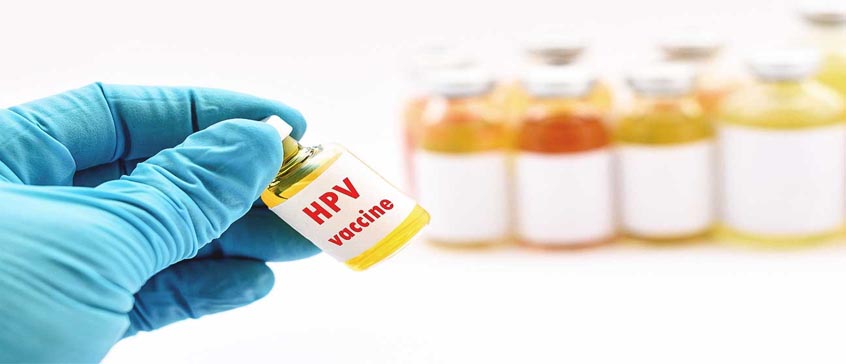HPV (Human Papilloma Virus) Vaccines

The strong relationship between cervical cancer and HPV infection has led researchers to develop vaccines against HPV infection. It is aimed that the vaccine will prevent HPV infection, reduce the need for HPV screening programs and reduce the frequency of cervical cancer with high treatment costs. They argue that since HPV infection is sexually transmitted and men play an important role as reservoirs, if a community-based vaccination program is to be implemented, including men will increase overall success.
Prophylactic and Therapeutic HPV Vaccines
It has been found that HPV 16 is the most important factor in the etiology of cervical cancers all over the world. This is followed by HPV 18, HPV 45 and HPV 31. These findings led to the first hpv vaccine studies being conducted with HPV 16 L1 Virus Like Particles (VLP). It has been shown that these vaccines cause antibody formation in women forty times more than natural infection, and protect from HPV infection, persistent HPV infection and HPV-related CIN.
Since HPV vaccines are type-specific, vaccination with HPV 16 L1 VLP only protects against HPV 16 infection, while it may not protect against other 34 types of genital HPV. After the success of monovalent vaccination with HPV 16, studies were conducted with dual vaccines containing HPV 16 and 18 VLP L1, and quadruple vaccines including HPV 6 and HPV 11, which are genital wart agents.
These vaccines immunologically prevent the virus from entering by increasing the amount of neutralizing antibodies in the cervix secretion. These vaccines mostly contain major capsule protein, L1 or L1+L2 proteins. It is prepared in the form of VLP (virus-like particles). VLPs are produced by baculovirus-infected insect cells or yeast cells. These virus-like particles are both morphologically similar to the virus and can adhere to the cell surface. Immunity obtained with these can be quite specific and long-lasting.
The first vaccine studies started after 1993. To date, three randomized trials of VLP prophylactic vaccines have been completed, the first being a single (phase 2) followed by a quadruple (phase 3) and bivalent (phase 2) vaccine.
Their joint results showed that HPV VLP vaccines are well tolerated and highly immunogenic, are effective in reducing the frequency of persistent HPV infection and HPV-related clinical disease, and the duration of antibody titers is longer with the bivalent vaccine.
The quadrivalent vaccine was approved by the FDA in 2006 and licensed in Turkey in January 2007. The dual vaccine was approved by the FDA in 2007 and licensed in Turkey in December 2007. Three doses at 0, 1 and 6 months of the dual vaccine; The quadruple vaccine is recommended to be administered in three doses at 0, 2 and 6 months. It recommends that the vaccine be routinely administered to 11-12 year old girls. It is reported that the vaccine can be given at the age of 9 at the earliest. Vaccination is envisaged for those aged thirteen to twenty-six who have not yet been vaccinated.
Serious Side Effects Reported After Vaccination with HPV Vaccine
- Nervous system disorders, Guillain Barre Syndrome and headache
- thromboembolic events
- Musculoskeletal and connective tissue problems
- lymphatic system disorders
- Gastrointestinal system problems
- Immune system problems (hypersensitivity reactions, bronchospasm, urticaria)
- Problems in the field of application
It is suggested that regression or stabilization of the lesions can be achieved with therapeutic vaccines in cases with precancerous lesions and cervical cancer. They are vaccines developed against HPV’s E1, E2, E6 and E7 gene proteins.
Although the primary target is the treatment of infection, it is also aimed to prevent the development of cancer in the long term, since they were developed secondarily against the E6 and E7 oncogenic gene proteins. There is no therapeutic vaccine developed and put into use yet.
HPV Vaccine Prices 2025
Call now for information about HPV vaccine cost 2025.
instagram: labistanbul